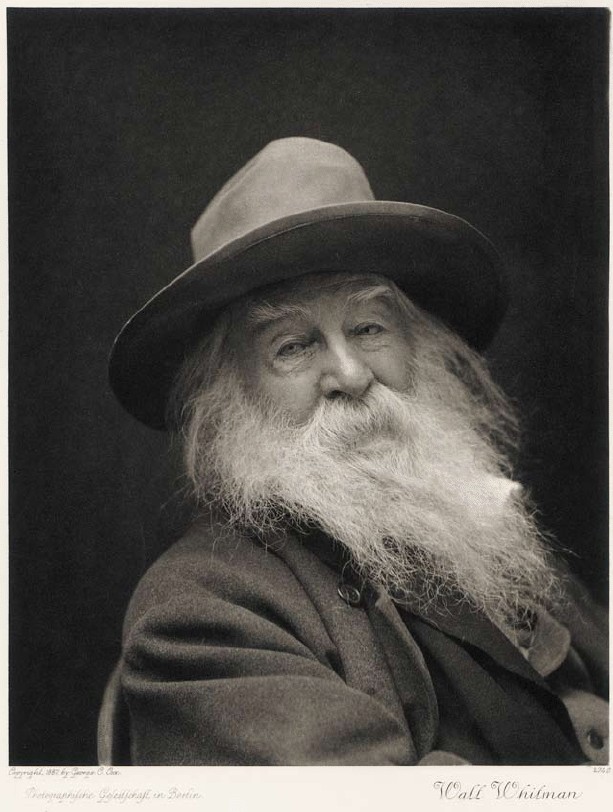- Relief printing
- Intaglio and planographic printing
- Color printing
- Bits and pieces
- Early photography in silver
- Non-silver processes
- Modern photography
- Color notes
- Color photography
- Photography in ink: relief and intaglio printing
- Photography in ink: planographic printing
- Digital processes
- Where do we go from here?
Hand gravure

Hand gravure. George C. Cox. Walt Whitman. c. 1887. 10 1/4 x 7 5/8" (26 x 19.4 cm). Printed by Photographische Gesellschaft, Berlin. The Museum of Modern Art, New York. Gift of Richard Benson. Photogravure is an intaglio process of great beauty, but it never became as common as letterpress halftone because it is expensive and requires specialized machinary.
I first started as a printer in 1966, and did a project a few years later for the New York publisher Leslie George Katz, who got me hooked on matte surfaces. He would look me intently in the eye and say he wanted a black value in the print to match the black surround in a monarch butterfly’s wing. This sort of obsession—which I quickly caught—led us to photogravure, and to attempts to make modern photo offset lithography with the kind of surface that gravure so routinely produces.
While nothing can compare with the magical matte surface of hand gravure (well—nothing could until the introduction of inkjet printing), we should be aware that any matte surface fails when compared to a glossy one in a contest of tonal rendition. The gloss always wins, because it can carry a blacker black and show finer detail. The lesson here is to avoid comparing such different things side by side, but instead to come to know them on their own, each in its own context.

